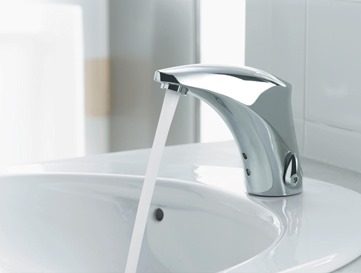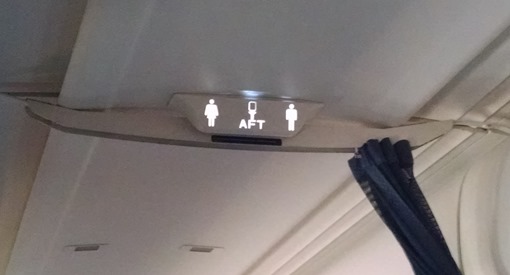 Last week my wife and I were flying back to Chicago for a Northwestern football game and I was using the restroom at the Orange County airport before we boarded. I washed my hands and then reached for the paper towel dispenser. I put my hand under the sensor (where the little sign said to place my hands) and nothing happened. Another guy came up and he tried as well. Nothing happened. We went down the counter with our hands dripping to find a dispenser that worked. Our trip included a layover in Salt Lake City. During our obligatory bathroom break I noticed the faucets in the Men’s restroom were not working. They were the kind where you are supposed to put your hands under the faucet and the water starts. I tried every faucet in the restroom (coming off my OC experience, I was on a mission). None of them worked.
Last week my wife and I were flying back to Chicago for a Northwestern football game and I was using the restroom at the Orange County airport before we boarded. I washed my hands and then reached for the paper towel dispenser. I put my hand under the sensor (where the little sign said to place my hands) and nothing happened. Another guy came up and he tried as well. Nothing happened. We went down the counter with our hands dripping to find a dispenser that worked. Our trip included a layover in Salt Lake City. During our obligatory bathroom break I noticed the faucets in the Men’s restroom were not working. They were the kind where you are supposed to put your hands under the faucet and the water starts. I tried every faucet in the restroom (coming off my OC experience, I was on a mission). None of them worked.
I met my wife and she said she needed to find another women’s restroom since she used the soap dispenser (automatic type and it worked) but she said none of the water faucets were working and her hands were sticky with soap. So, innovation at it’s finest. The new fangled automatic faucets in both the men’s and women’s restroom didn’t work. So off we went in search of another restroom. Now I was in experiment mode. I went into a restroom on a different concourse (to see if it was the faucets or some sort of controller, since in our previous concourse all of the faucets weren’t working) and to my astonishment, all the faucets worked, but the automatic soap dispensers didn’t work! This time I went to the standard paper towel dispenser where you pull the paper from the bottom with two wet hands. That worked fine!
The faucet companies most likely spent a fair amount of time and money developing these unreliable devices. This is not the first time this has happened. I travel a lot for my business and more likely than not, some sort of automatic device does not work properly. So my question is; is this innovation? Since the reliability is so poor, we lose all of the benefits in the original value proposition. Remember last week we said value is benefit minus cost to acquire. In this case, the cost to acquire is zero since the user didn’t install the faucet. The benefit was presumably a more efficient, more hygienic way to wash your paws. The old faucets would allow you to adjust the water temperature and flow. It’s only a guess to what the water temperature will be when you put your hands under the new fangled faucets. I also presume the automatic faucets were installed to reduce water usage, which is a good thing. But when NO water comes out when you put your hands under the faucet, well, that’s not a good thing.
So when is innovation not innovation? Do you have any examples?
On the flight back to Orange County, we were flying on an Airbus A320. I was thinking about how to tell the faucet story when I looked up at a sign on the ceiling. The intention was to indicate if the washrooms (man, I’m on a washroom kick this trip!) were occupied. Good idea. But look at the sign below.
The sign says AFT. What are we flying on a boat? I was thinking about the English as a second language passengers or those not familiar with aircraft or nautical terms, that AFT means the rear of the vessel. Why didn’t they just put REAR on the sign? As product developers we have to put ourselves in the customer or user’s shoes to make sure what we are developing will work reliably and consistently deliver the value proposition. Speaking of innovation, I used my cell phone camera to take the above picture. How many people don’t even have a regular camera anymore since the cell phone cameras are so good these days.
By the way, Northwestern beat Penn State 23-21 on a last second field goal. Go Cats!
Water faucet image from Kohler
111


Leave a Reply